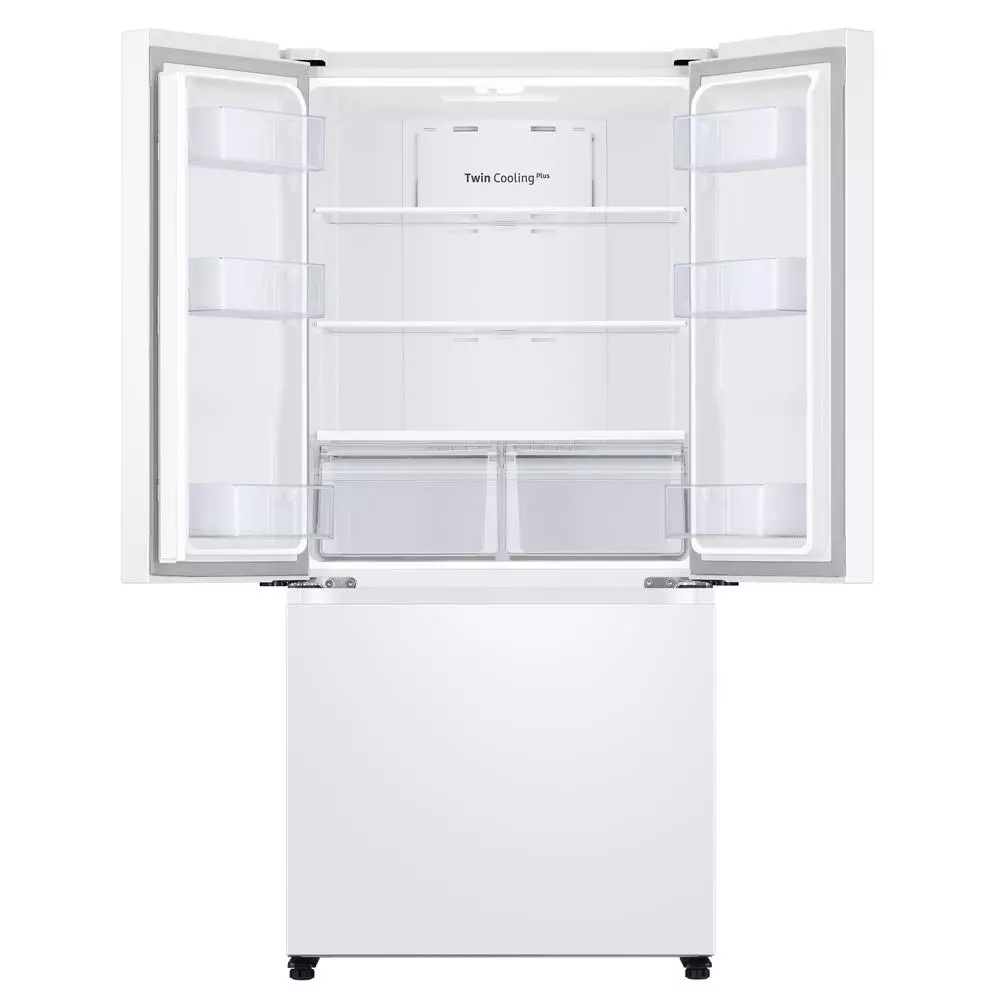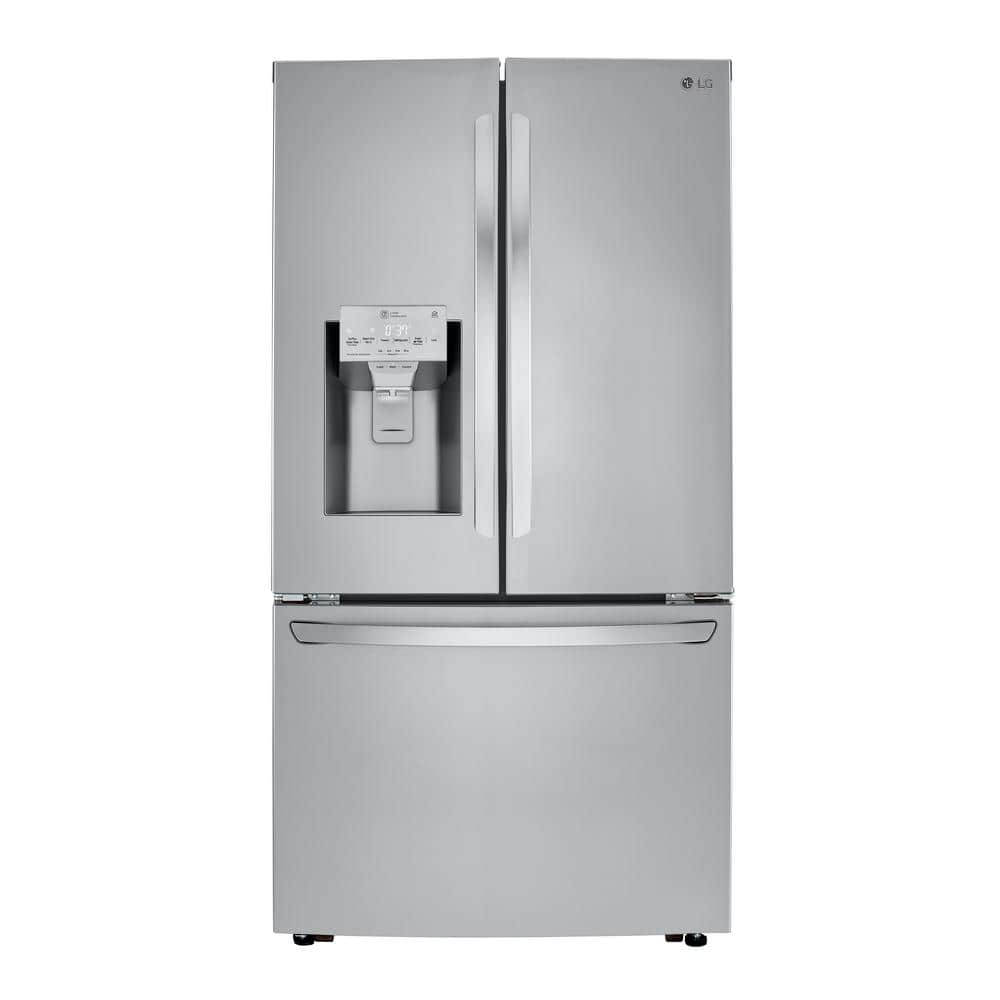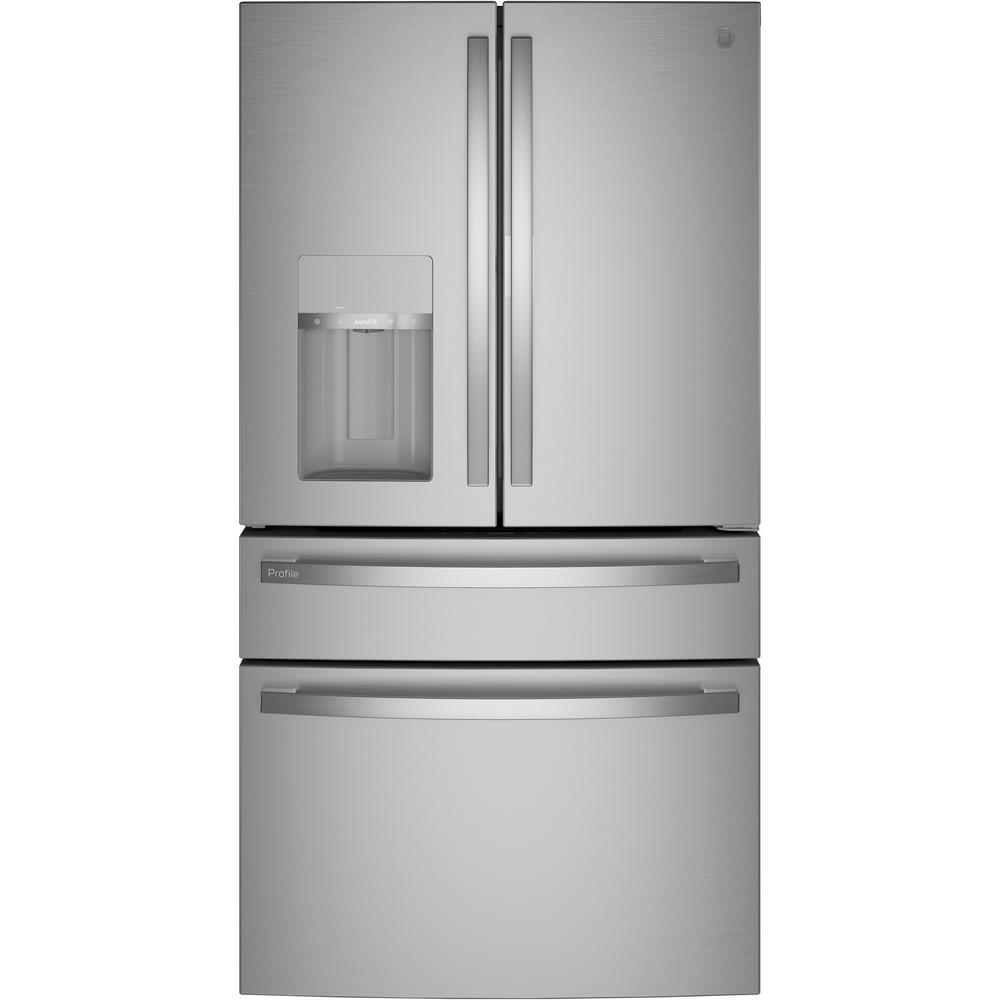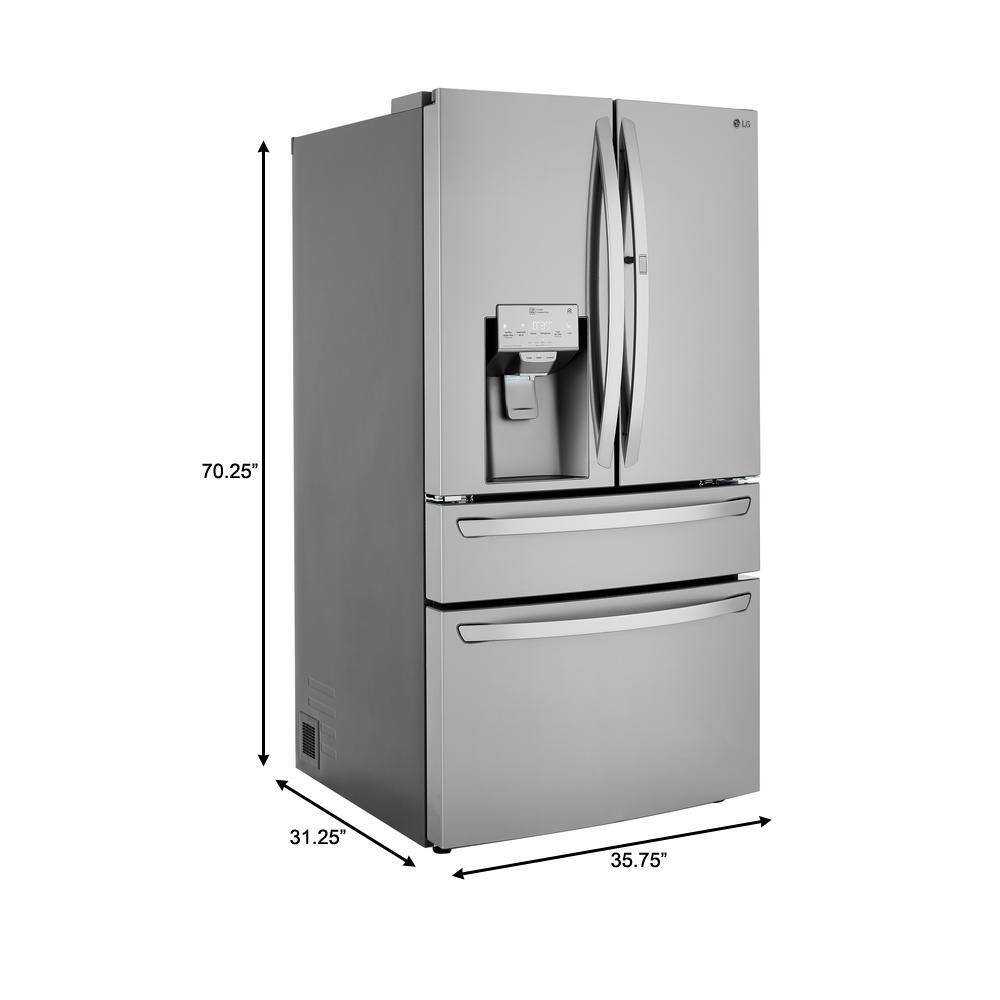Samsung 18 cu. ft. Smart Counter Depth 3-Door French Door Refrigerator
Seamlessly designed for a modern, built-in look. Control and monitor your fridge remotely. Fingerprint Resistant Finish.
33 in. wide Smart Counter Depth 3-Door French Door Refrigerator is seamlessly designed for a modern, built-in look. Stay connected anywhere, anytime using the SmartThings App. The fingerprint resistant finish withstands everyday smudges, so you spend less time cleaning.
- Modern, built-in look that blends seamlessly into your kitchen
- Wi- Fi Enabled. Use the SmartThings App* on your smartphone to control the temperature and monitor your refrigerator remotely. *Available on Android and iOS devices. A Wi-Fi connection and a Samsung account
- ENERGY STAR Certified
- Fingerprint resistant finish withstands everyday smudges, so you spend less time cleaning.
- Twin Cooling Plus keeps food fresher, longer
- ADA Compliant – Easy-to-reach controls
- LED lighting designed to beautifully light up the interior of your fridge so you can quickly spot what you want
- Quickly freeze or chill your food with the Power Freeze or Power Cool options – lowers the temperature with the push of a button
- Adjustable Top Freezer Shelf
- Gallon Door Bins
- Humidity-Controlled Crispers
- Ice Maker stores up to 5.5 lbs of ice
- Water Filter Indicator
- Also available in Fingerprint Resistant Black Stainless Steel and Fingerprint Resistant Stainless Steel
- Warranty – One (1) year parts and labor on refrigerator; five (5) years parts and labor on sealed refrigeration system only; ten (10) years parts and five (5) years labor on digital inverter compressor
- 3-door French door refrigerator has two fresh food doors and one bottom mount freezer drawer
Additional information
| Depth (Excluding Handles) | 28.13 |
|---|---|
| Depth (Including Handles) | 28.13 |
| Depth (Less Door) | 24.5 |
| Depth With Door Open 90 Degrees (In) | 41.5 |
| Height to Top of Door Hinge (in.) | 70 |
| Height to Top of Refrigerator (in.) | 68.8 |
| Product Depth x Height x Width (in.) | 28.13 x 70 x 32.13 |
| Refrigerator Width (In.) | 32.13 |
| Certifications and Listings | UL Listed |
| Manufacturer Warranty | One (1) Year Parts and Labor on Refrigerator Five (5) Years Parts and Labor on Sealed Refrigeration System Only* Ten (10) Years Parts and Five (5) Years Labor on Digital Inverter Compressor |






Reviews
There are no reviews yet.